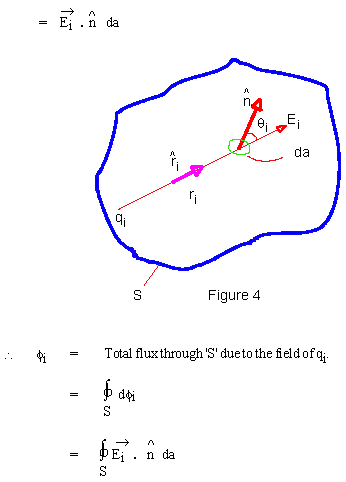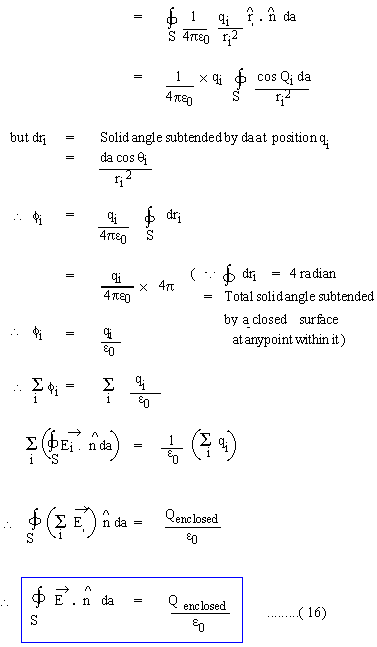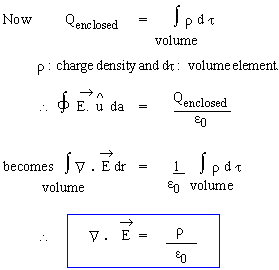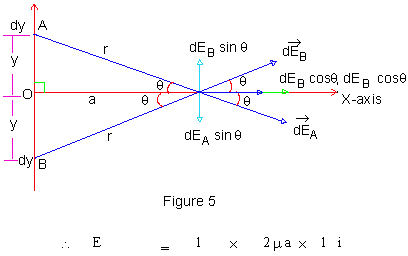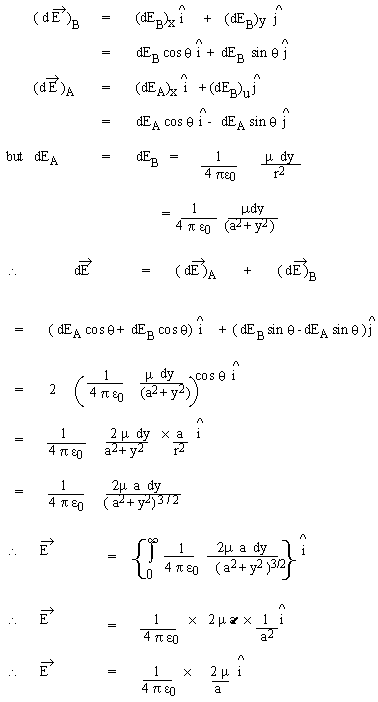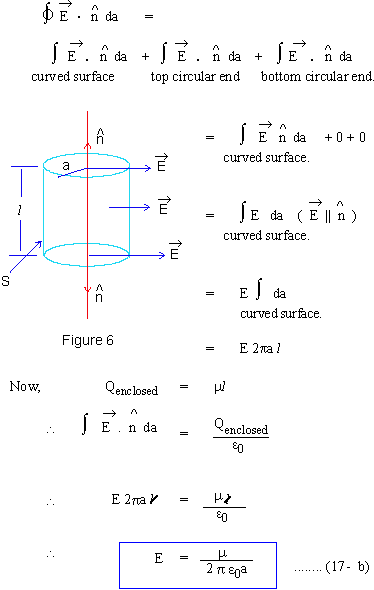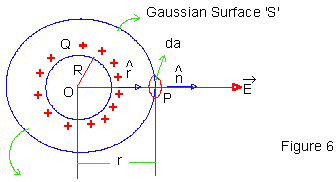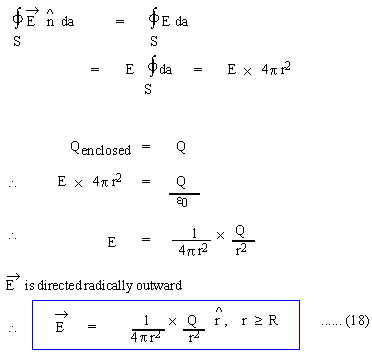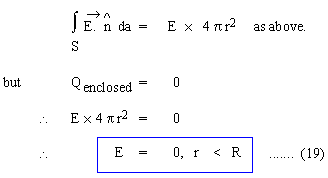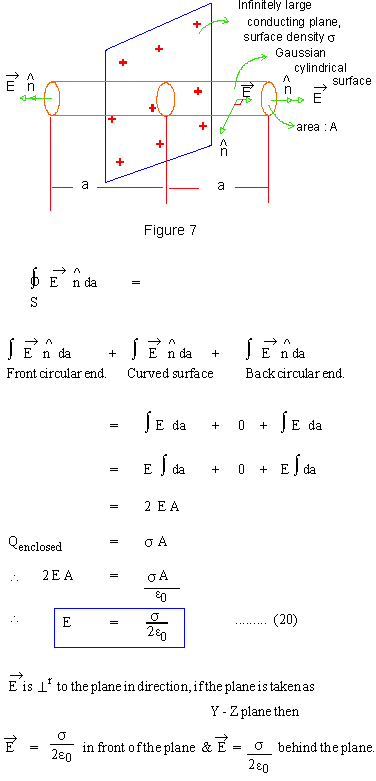19.3 Gauss's law "The electric flux through a closed surface is equal to
the net charge enclosed within the surface divided by the permittivity
where 'S' is a closed Surface. 'da' is the elementary area on 'S' Qenclosed is total net charge enclosed within 'S'.
Equation (16) is called an integral form of Gauss's law. Even in this form it has tremendous power to determine E for a system of charges having certain kinds of symmetry, in a simple manner, compared to calculations by super position principle. But, when expressed in differential form, it forms one of the four field equations of Maxwell and thus becomes one of the pillars on which the edifice of Classical Electromagnetic field theory is based. In Vector analysis, one of the theorem is, known as Gauss's Divergence theorem. As an illustration of power in Gauss's law, consider determination of
The choice of X - axis is only for convenience; the directions of
The same result can be obtained by using Gauss's law.
Fields of Spherical charged conductor and infinitely large plane conductor Spherical charged Conductor (i) Points outside or on the sphere,
Spherical charged conductor, Radius: R, total charged and surface density of charge
It is obvious that the charge on the sphere behaves as if it is concentrated at the centre, in so far as the
field at (ii) Points inside the Sphere, (r < R )
Infinitely large conducting plane
|
Electricity and
Magnetism 19.1 Coulomb's Law 19.2 Electrostatic Field 19.3 Gauss's Law 19.4 Capacitors Follow @Pinkmonkey_com  |

